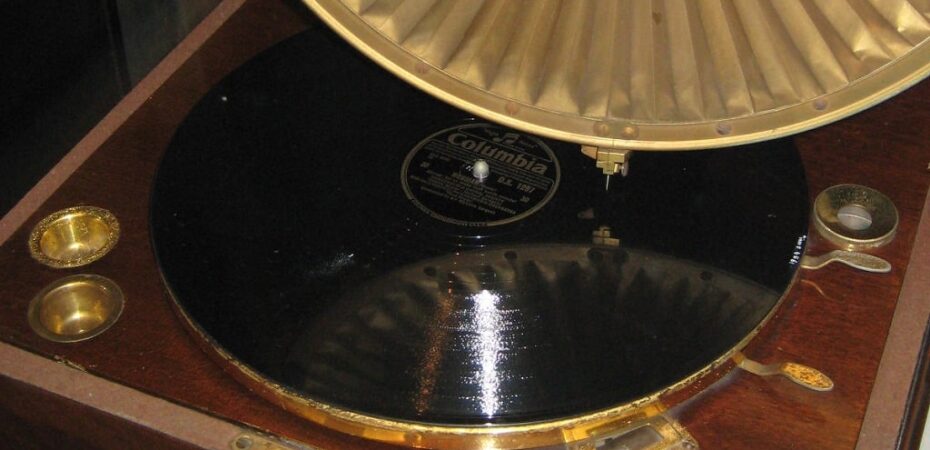In the age of digital streaming and wireless speakers, the quaint charm of gramophones still manages to captivate many. These iconic pieces of machinery have a fascinating history and an intricate mechanism that powers their melodious magic. So, let’s dive into the mechanics of gramophones and uncover the secrets behind their timeless allure.
Evolution of Sound: A Brief History of Gramophones
Before we delve into the inner workings of gramophones, it’s essential to understand their evolution. The concept of reproducing sound mechanically dates back to the late 19th century when Thomas Edison invented the phonograph. This groundbreaking device used a rotating cylinder wrapped in foil to record and play back sound.
Over time, the phonograph evolved into the gramophone, thanks to the pioneering efforts of inventors like Emile Berliner. Unlike the phonograph’s cylindrical design, the gramophone utilized a flat disc, which eventually became the standard format for recorded music.
Anatomy of a Gramophone: Exploring Its Components

To comprehend how gramophones produce sound, let’s dissect their key components:
1. Turntable
At the heart of every gramophone lies the turntable, a circular platform where the vinyl record spins. The turntable’s rotational motion is crucial for translating the grooves on the record into audible sound.
2. Tonearm and Cartridge
Mounted on the turntable, the tonearm is responsible for holding the cartridge, which houses the stylus. As the record rotates, the stylus traces the grooves, converting physical vibrations into electrical signals.
3. Amplifier and Speaker
Once the electrical signals are generated, they travel through the amplifier, which boosts their strength. Finally, the amplified signals reach the speaker, where they’re transformed back into sound waves that we can hear.
The Mechanics of Music: How Gramophones Translate Grooves into Melody
Now, let’s unravel the intricate process through which gramophones bring music to life:
- Placing the Record: To begin, the user selects a vinyl record and places it onto the turntable.
- Starting the Turntable: With the flick of a switch, the turntable starts rotating at a constant speed, typically 33⅓, 45, or 78 revolutions per minute (RPM), depending on the record’s format.
- Engaging the Stylus: As the record spins, the tonearm lowers, positioning the stylus at the outer edge of the disc. The stylus delicately rests in the record’s grooves, ready to trace their contours.
- Following the Grooves: As the stylus moves inward, it encounters the undulating grooves etched into the vinyl. These grooves contain the recorded audio information, encoded as variations in depth and spacing.
- Converting Vibrations to Signals: As the stylus traverses the grooves, it vibrates in response to the minute irregularities of the surface. These vibrations are then translated into electrical signals by the cartridge.
- Amplification and Output: The electrical signals produced by the cartridge are relatively weak. Hence, they’re sent to the amplifier, which strengthens them to a level suitable for driving the speaker.
- Recreating the Sound: Finally, the amplified signals reach the speaker, where they’re converted back into audible sound waves. These sound waves faithfully reproduce the original recording, filling the room with music.
Conclusion: Rediscovering the Elegance of Gramophones
In a world dominated by digital technology, the simplicity and elegance of gramophones remain a testament to the timeless appeal of analog sound. By understanding the mechanics behind these iconic devices, we gain a deeper appreciation for their role in shaping the history of recorded music. So, the next time you listen to the warm, crackling melodies emanating from a vintage gramophone, take a moment to marvel at the ingenuity that makes it all possible.
Read Also
- The Boy and the Heron – Showtimes & Online Streaming Update
- Hdtoday.cc – Your Ultimate Destination for Seamless Streaming of Movies and TV Shows
- 15 Free Movie Streaming Websites
- 2 Best NFL Streaming Sites for Free NFL Live Streams 2022
- 6 Best Live Sports Streaming Apps For Android
- How to Play Music from Phone to Car without Aux or Bluetooth?
- SpotiKeep Apple Music Converter Review – Convert Apple Music to MP3

